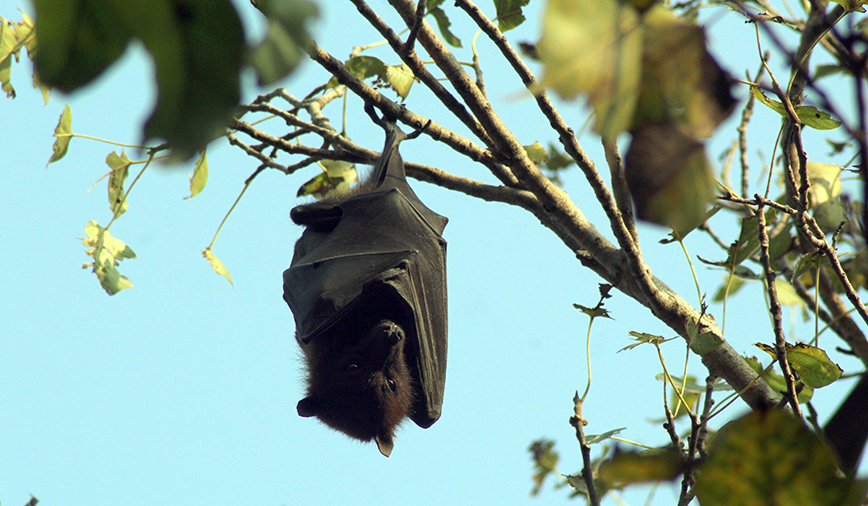One of the things I love most about being outdoors is that you never know what you might find. This time of year especially, the woods, fields and streams are full of curiosities, some annual in nature and some so rare you might see them only once in a lifetime.
If you move slow enough, and/or are observant enough, you right now might be able to go out and spot a female wolf spider on the prowl, her dozens of recently hatched young clinging to her back as she hunts for a meal. (We found a momma wolf here at Pottawatomie on Thursday.) Or you might be lucky enough to come upon an annual cicada that, having spent the last handful of years underground, at long last is seeing the light of day. (Last week I spotted one, still caked in mud, along Anderson Blvd. in Geneva.)
Or you might, while watching butterflies at Leroy Oakes Forest Preserve in St. Charles, notice an odd lump of fur on the branch of a bush. You might go closer, to try and confirm that you’re really seeing what you think you’re seeing. You might even do a double take before finally realizing that, holy cow, that’s a bat hanging there! A hoary bat, to be specific; a chunky dark lump, fur tipped in white, dangling in the sunlight.
If you don’t believe this could happen, just ask Tom Peterson of Geneva. Last weekend he not only spotted the bat, but also had the presence of mind to snap a picture of it.
Finding a hoary bat in the wilds of St. Charles is the natural-world equivalent of running into a movie star on a downtown street. Like movie stars, hoary bats are not completely unheard of in our area. But they are uncommon, typically occurring in very low numbers. And if you do happen to see one, it’s an experience you’ll never forget. (How many of you still remember seeing Tom Hanks when he was in Geneva filming Road to Perdition? That was cool. But the even cooler thing about hoary bats is that, unlike Mr. Hanks, they won’t be surrounded by an impenetrable entourage of Hollywood types. Plus, they’re mammals that can fly AND eat bugs. Even in his biggest roles, Tom Hanks has never done that.)
By now you might be thinking, “Eh, big deal. So somebody found a bat. I’ve got bats all over my neighborhood.” Thing is, the bats that live in developed areas usually are either big brown or little brown bats—species that roost colonially in attics, under eaves, behind shutters, places normally associated with people and structures.
Hoary bats, on the other hand, are solitary bats. They live in the woods, by themselves, roosting among the leaves in mature trees. But, as Tom Peterson’s bat seems to indicate, a thorny twig just a few feet off the ground also can be home sweet home, at least for a day.
At five inches in length and just under an ounce in weight, hoaries are Illinois’ largest bat. Like their other Chiropteran cousins, they’re insectivores, dining throughout the summer months on moths (a preferred prey item) and other flying insects.
Such a diet means that when the bugs go, the bats go too. Hoaries typically migrate to more moderate climates as temperatures begin to cool. But their comparatively large size and ample fur affords them the option of sticking around too, spending the cold-weather months hibernating in protected tree nooks or under bark.
We have no way of knowing the life history of the hoary bat Tom Peterson spotted at Leroy Oakes. Will it stay the winter, or migrate? Will it be back again next summer? And just how did it come to be clinging to a twig just a few feet off the ground? The questions just get curiouser and curiouser.
If you decide to go out for a ramble this warm July weekend, keep your eyes open for curiosities like hoary bats, momma wolf spiders and recently emerged cicadas. And if you happen to run into Tom Hanks—or Tom Peterson—tell him I say hi.
Pam Otto is the manager of nature programs and interpretive services for the St. Charles Park District. She can be reached at potto@stcparks.org or 630-513-4346.

